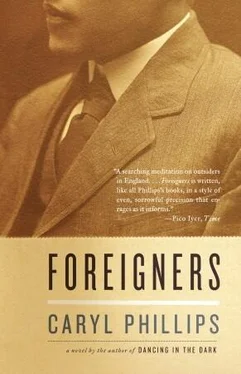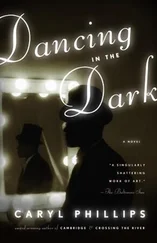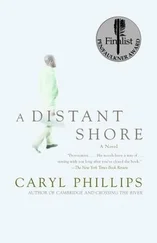Almost immediately, Turpin returned to train at Gwrych Castle in Wales where Leslie Salts quickly erected a new sign which read:
COME AND MEET A WORLD CHAMPION
AT SUNNY GWRYCH CASTLE.
HAVE YOUR PHOTO TAKEN WITH RANDY TURPIN
Visitors arrived in their thousands, and after long days working out, Leslie Salts sometimes had Turpin autographing photographs late into the night. Salts claimed that all of the money from the sale of Turpin's photographs was going to the Blind Institute, although both Jackie Turpin and George Middleton had their doubts. Turpin was a good trainer, and he was always out of bed early and ready to do his exercises overlooking the Irish Sea and, much to George Middleton's relief, it appeared that Turpin's relative isolation in Wales was enabling him to refocus his mind on the task at hand. Every few days the press would appear at Gwrych Castle and Turpin would tell them about how he had been relaxing by spending time in the petting zoo at the castle, or amusing himself with some knife-throwing or archery. He said that in the evenings he listened to music or went to the local pictures, or simply read his Tarzan comic books. What he did not tell them about were the young local girls with whom he amused himself, and the vast number of photographs that Salts encouraged him to sign. However, despite the official, and unofficial, distractions in the castle, Turpin remained an assiduous trainer and towards the end of July he even fought an exhibition bout in Portsmouth on a bill that was topped by his brother Jackie. After a month's intensive work, the Turpin entourage was ready to sail to the United States where Britain's middleweight world champion would make his first title defence.
On 15 August, 1951, the New York Times announced the departure of Turpin from Britain. 'Wearing a black beret at a rakish angle, the quiet, smiling champion waved goodbye to cheering crowds as he boarded a train for Southampton. Tomorrow he will leave England on the Queen Mary for New York. In an unusual outburst of oratory, Turpin told fans, "Well, I'm on my way at last and I will not let the British people down. I'm going to win."' The passage on the luxury ocean liner was largely uneventful, but because they were travelling in first class the Turpin party were made to feel extremely comfortable. Both Dick and Jackie Turpin were among the fighter's team, along with George Middleton, and Jack Solomons and his wife, but Leslie Salts had decided to fly to New York. Everybody, except Turpin himself, seemed to feel that things would be better if the irritating Leslie Salts had stayed at home in Britain, but fearful of upsetting Turpin's mental state nobody had dared to make the suggestion. The Queen Mary possessed a fully equipped gymnasium and so, after doing 'roadwork' on the deck early each morning, Turpin was able to keep up his training routine. Flying, of course, was not a possibility for Turpin, or any fighter, for since the tragic death of the French boxer Marcel Cerdan, as he crossed the Atlantic on an ill-fated flight to New York, promoters had insisted that boxers minimise all travelling risks. The afternoons on board the Queen Mary dragged, and formal dinners with evening gowns for the ladies and tuxedos for the men were an interesting novelty for the Turpin boys, and they took great care to make sure that they were always immaculately dressed. After seven days, on 22 August, 1951, the Queen Mary docked on the West Side of Manhattan and Randolph Turpin set foot on American soil for the first time.
On reaching New York City, the Turpin group checked into the Hotel Edison on West 47th and Broadway, an acclaimed and opulent hotel close to the lights and glamour of Times Square. The art deco luxury palace, which featured an elegant marble and steel lobby, was a hotel that was familiar with the rigmarole of accommodating sporting celebrities. To Turpin's great surprise, it appeared that all of America wanted to know about this 'Limey' who had defeated the great Sugar Ray Robinson in London, and both radio and newsprint journalists immediately descended upon him with questions about how he had managed to beat Robinson in London, and how he regarded his chances in New York. Despite his convincing victory in their first fight, the bookmakers had Turpin pegged as a six-to-four underdog, but not wishing to antagonise his hosts, Turpin was careful to appear only modestly confident. 'The Battle of Nations', as the fight was advertised, would take place at Harlem's famous Polo Grounds at 155th Street, the home of the New York Giants baseball team, and a place that was also a popular boxing venue. In 1923, Jack Dempsey had knocked out Luis Firpo in front of 90,000 fans at the Polo Grounds, and the 61,370 tickets available for the Robinson-Turpin rematch had sold out almost the instant they went on sale. American interest was huge, and the projected gate receipts of $767,626 had already shattered the record for a non-heavyweight fight.
Jack Solomons and George Middleton limited the fighter's exposure to the press and Turpin soon settled into a disciplined training routine at Grossinger's training camp, where the public could pay two dollars and come and watch 'The Man Who Beat Sugar Ray Robinson' sparring. Grossinger's was situated about one hundred miles north of New York City, high up in the Catskill Mountains. It was a country-club-style hotel, with a golf course, a restaurant, and extensive acreage and outbuildings, including an airport hangar where a ring had been constructed. An impressive Turpin punished his four American sparring partners and it was clear that he was in first rate physical condition and, if anything, even stronger than he had been for the original bout. Despite the manifold temptations of New York City, Turpin appeared to be resisting the lure of the city's nightlife and applying himself to his work but, as the fight drew nearer, there were worries in Turpin's camp about the fighter's mental state and, once again, the main problem was women.
Relations between Turpin and his wife Mary had irretrievably broken down, so much so that they were barely on speaking terms. It was not just her allegations of Turpin's violence towards her that had driven a wedge between the couple, but she was unable to cope with the humiliation of Turpin's persistent infidelity. Her tight-knit family rallied to her side and opinions in Leamington Spa were polarised as to the behaviour of the 'hero' Turpin towards his wife. There were still some people who had not forgotten how young Turpin would occasionally harass any who crossed his path, and no amount of public glory or sporting achievement was going to change their low opinion of him. When his wife's allegations of violence became public, many people shunned both Turpin and his family. However, there were also those who regarded the Stack family with some suspicion, and although they knew that the Turpins, like all families, had their faults, they had no desire to see them vilified. Whatever the rights or wrongs of the situation, Mary Turpin had clearly taken all she could endure and Turpin had boarded the Queen Mary for New York knowing that at some point in the near future he was going to be faced with very public, and undoubtedly expensive, divorce proceedings.
That Turpin would be unfaithful to his wife was hardly a surprise to any who knew him. After all, he had not even been faithful to Mary Stack while they were courting, and his reputation as a fit, handsome man who liked to chase, and be chased by, the ladies was well earned. However, 'managing' women was something that a man with a controlling personality like Turpin's was unsuited to, for he could hardly expect to exercise authority over every woman that he was involved with. His manager worried about his interest in women for different reasons, for it had long been assumed that too much sex sapped a fighter's strength and made him vulnerable in the ring. Most fighters were encouraged to stay away from 'female temptation' for at least five or six weeks before a bout, the belief being that this pent-up frustration would result in a ferocious outpouring of energy when it was time to fight. However, Turpin's normal schedule of regular fighting, plus his inability to pass by a pretty girl, meant that this theory was never really tested in his case. Sugar Ray Robinson, on the other hand, not only believed in the theory, he practised it. In his autobiography he wrote, 'One of the big sacrifices in being a champion is sex. If you're a fighter, you need your energy. You can't leave it with a woman, even if she's your wife.' He believed that abstinence gave a fighter both a physical and a psychological advantage. 'In abstaining from it, you're not only stronger, but you think you're stronger. You're meaner because your nervous system is on edge. And when you walk into the center of the ring for the referee's instructions and stare at your opponent, you dislike him more than ever because he's the symbol of all your sacrifices. But for a weak one, a sneaker, as trainers call them, sex works the other way. When he goes into the ring, he's got a guilty conscience. He doubts his stamina. He believes that his opponent is better conditioned than he is. Mentally, he's beaten before the bell rings.'
Читать дальше











![Unknown - [Carly Phillips] The Bachelor (The Chandler Brothe(Bookos.org) (1)](/books/174132/unknown-carly-phillips-the-bachelor-the-chandle-thumb.webp)
